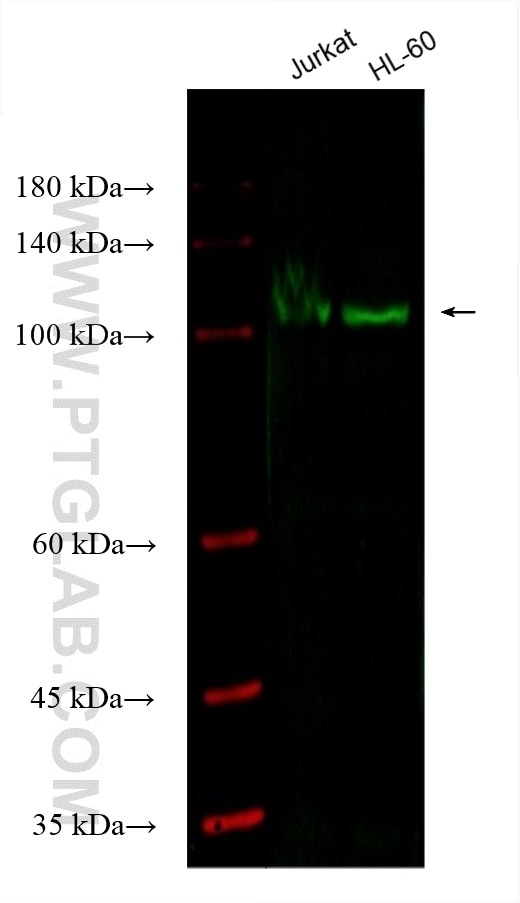CoraLite® Plus 488-conjugated UNC13D Monoclonal antibody
UNC13D Monoclonal Antibody for WB
Host / Isotype
Mouse / IgG1
Reactivity
Human
Applications
WB
Conjugate
CoraLite® Plus 488 Fluorescent Dye
CloneNo.
1C5C1
Cat no : CL488-67193
Synonyms
Validation Data Gallery
Tested Applications
| Positive WB detected in | Jurkat cells, HL-60 cells |
Recommended dilution
| Application | Dilution |
|---|---|
| Western Blot (WB) | WB : 1:500-1:2000 |
| Sample-dependent, check data in validation data gallery | |
Product Information
CL488-67193 targets UNC13D in WB applications and shows reactivity with Human samples.
| Tested Reactivity | Human |
| Host / Isotype | Mouse / IgG1 |
| Class | Monoclonal |
| Type | Antibody |
| Immunogen | UNC13D fusion protein Ag10497 相同性解析による交差性が予測される生物種 |
| Full Name | unc-13 homolog D (C. elegans) |
| Calculated molecular weight | 1090 aa, 103 kDa |
| Observed molecular weight | 120 kDa |
| GenBank accession number | BC067084 |
| Gene symbol | UNC13D |
| Gene ID (NCBI) | 201294 |
| Conjugate | CoraLite® Plus 488 Fluorescent Dye |
| Excitation/Emission maxima wavelengths | 493 nm / 522 nm |
| Form | Liquid |
| Purification Method | Protein G purification |
| Storage Buffer | PBS with 50% Glycerol, 0.05% Proclin300, 0.5% BSA, pH 7.3. |
| Storage Conditions | Store at -20°C. Avoid exposure to light. Stable for one year after shipment. Aliquoting is unnecessary for -20oC storage. |
Background Information
UNC13D is a member of the UNC13 family, containing similar domain structure as other family members but lacking an N-terminal phorbol ester-binding C1 domain present in other Munc13 proteins. The protein appears to play a role in vesicle maturation during exocytosis and is involved in regulation of cytolytic granules secretion.
Protocols
| Product Specific Protocols | |
|---|---|
| WB protocol for CL Plus 488 UNC13D antibody CL488-67193 | Download protocol |
| Standard Protocols | |
|---|---|
| Click here to view our Standard Protocols |


